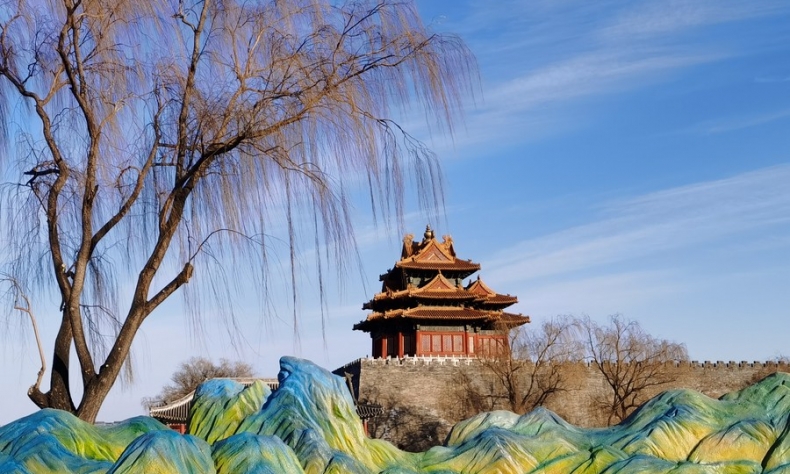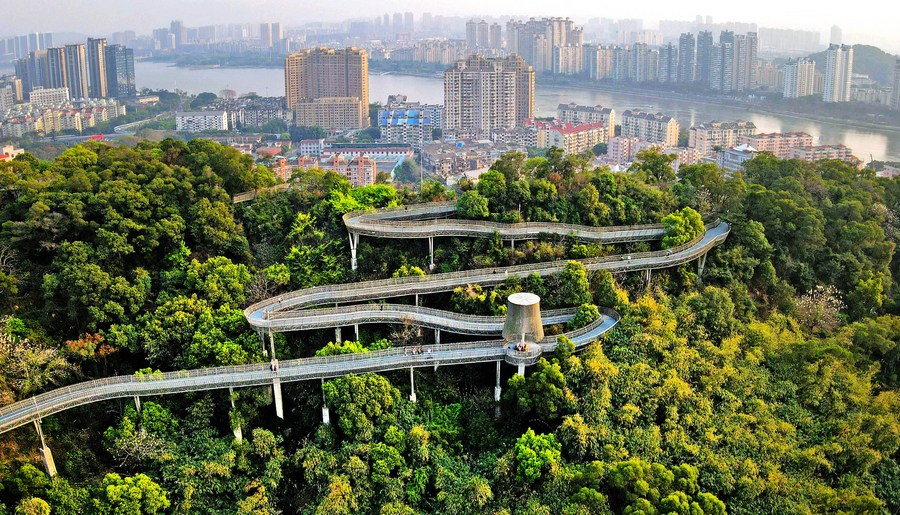Creating Benchmarks in Urban Planning and Architecture

While learning from others, China can contribute new technologies, work capacity, and industrial strength to restore harmony with nature.
As an architect and designer I have had the opportunity to combine my profession with teaching in several universities such as the National Autonomous University of Mexico and the Elisava Barcelona School of Design and Engineering where I was a professor for more than 20 years. Now at Ekkoabit, an educational project on environmental awareness in Barcelona, I teach, share, and explore knowledge and experiences with students from all over the world.
One of the most interesting experiences has been the opportunity to teach in China for more than five years. In this country I have found the students very proud of their culture, very sensitive to environmental issues, and very interested in contributing to the quality development of their country.
Climate change, resource depletion, and biodiversity loss are humanity’s greatest challenges as a species. China is aware of this situation and has become one of the leading countries to address these challenges.
In this context, the training of future architects and urban designers requires a strong focus on environmental design and sustainability strategies. At Ekkoabit we work with Chinese students, promoting creativity as a basis for finding new ways to better relate to our environment.
Fostering imagination and creativity while valuing traditions
Imagination is the first step to creativity, and there is no innovation without it. In order for students to have innovative minds, it is important that they learn to develop their imagination.
The first step in creating more humane and sustainable environments is to generate “possible futures” in which people do not feel outside of nature by destroying it and depleting its resources, but are aware that they are an interdependent part of it.
The challenge we face in environmental terms requires major development of creativity and innovation because we cannot continue to face current problems with the tools and mentality that created them.

Many years of trial and error throughout history has generated local wisdom on how to manage the environment in which we live. China has a long tradition of relating harmoniously with nature through garden and landscape design, as well as constructing buildings with sustainable low-carbon materials such as wood, ceramics, and earth.
The new generations of Chinese students are beginning to take a keen interest in their own cultural values. This philosophical knowledge should not be lost as it can contribute to the development of a new urban and architectural modernity that is more sustainable and more linked to Chinese culture.
Creating public spaces in a nature-based way
China’s urban growth is without precedent in human history. The country’s great effort to eradicate extreme poverty in a certain time span had generated buildings that prioritize quantitative aspects such as density and economic cost over qualitative aspects such as thermal comfort, environmental quality, and green recreational areas.
The idea of “placemaking” is to avoid segregated spaces without any link to the natural and social environment. The idea is to generate spaces with diversity of uses and activities, accessible spaces that promote community life among the different generations of inhabitants, cultural values and contact with nature.
Aging population, green and digitalized industrial transformation, changes in mobility, energy crisis, and climate change are some of the factors that will transform current Chinese cities in the process of generating new public spaces to improve people’s living environement.
The pedestrianization of streets, creation of green axes, and the design of areas of traffic pacification or superilles, that is, green hubs where traffic is discouraged, carried out recently in Barcelona are examples that can be illustrative for Chinese architects and urban planners.
Instead of fighting against nature, we must learn from it. Designing nature-based solutions allows architects and urban planners to solve needs while maintaining harmony with the environment.
Nature can be a great ally for designers and architects. It provides environmental regulation services (air and water cleaning, pollination, flood control, and carbon storage), life support services (biodiversity, animal and plant habitats, soil formation), provisioning services (food, materials, and medicines) and cultural services (tourism, recreation, physical and mental health, cultural and spiritual experiences.)

An interesting example in Barcelona is the green corridors project that connects parks with green areas throughout the city, promoting the development of biodiversity and pollination and functioning as climatic refuges against extreme weather. Another example in Barcelona is the Parc de les Glòries, a park designed to foster biodiversity. It consists of tiny nature reserves, rain gardens with flower beds, areas of trees and shrubs to collect rainwater which slowly filters through to the subsoil, also spaces for sports, and even an area for dogs.
From design with forms to design with energies
The current environmental crisis demands that architects and urban planners understand the form as a consequence of the energies that buildings will use (based on sunlight, solar, wind, etc.) The form of the buildings must also respond to the need to reduce carbon emissions from both the useful life of the buildings and the materials we use to construct them.
Barcelona is promoting architectural structures made of wood, which is considered a material that functions more as a carbon sink than a carbon emitter.
Meanwhile, to take care of our environment, we must not only appreciate it visually, we also need to develop new ways of connecting with it through our other senses. The sound of the wind in a bamboo forest, the feeling of freshness under a tree, the warmth of the sun stored on a wall or the smell of spices and aromatic plants are ways to connect with nature. Exploring new connections with the elements of nature through the senses can be a way to generate a new environmental sensitivity, healthier cities and buildings and altogether spaces that are not only healthier and more sustainable but also more exciting.
In the last century, Spain experienced uncontrolled urban growth with low environmental quality. Today the situation has changed and Barcelona is a leading city in terms of its architecture, urban planning and quality of life of its residents through new proposals of urban regeneration. China is also beginning a major transformation of its cities into greener, cleaner, healthier, and more sustainable environments. In a few years, China will also be an international benchmark of qualitative development in urban planning and architecture.
The strong links with nature that are present in traditional Chinese culture, the development of new technologies, the work capacity and the strength of the industrial sector are values China can contribute to the design of better buildings and more sustainable cities, not only in Spain but throughout the world.
Juan Albert is director of the Spain-based Ekkoabit project, professor at Gengdang Institute of Beijing University of Technology, and former professor with Elisava Barcelona School of Design and Engineering.
 Facebook
Facebook
 Twitter
Twitter
 Linkedin
Linkedin
 Google +
Google +










